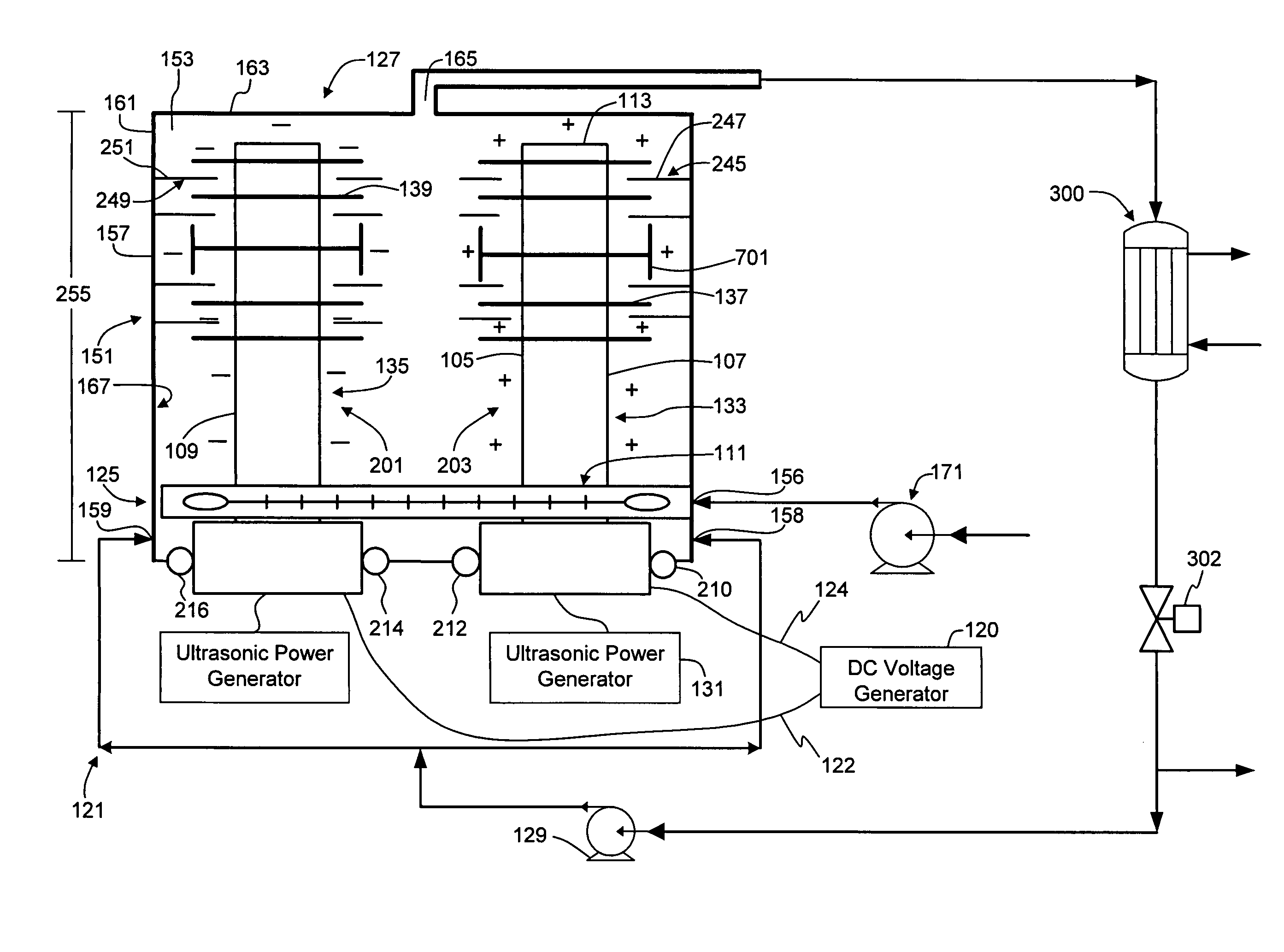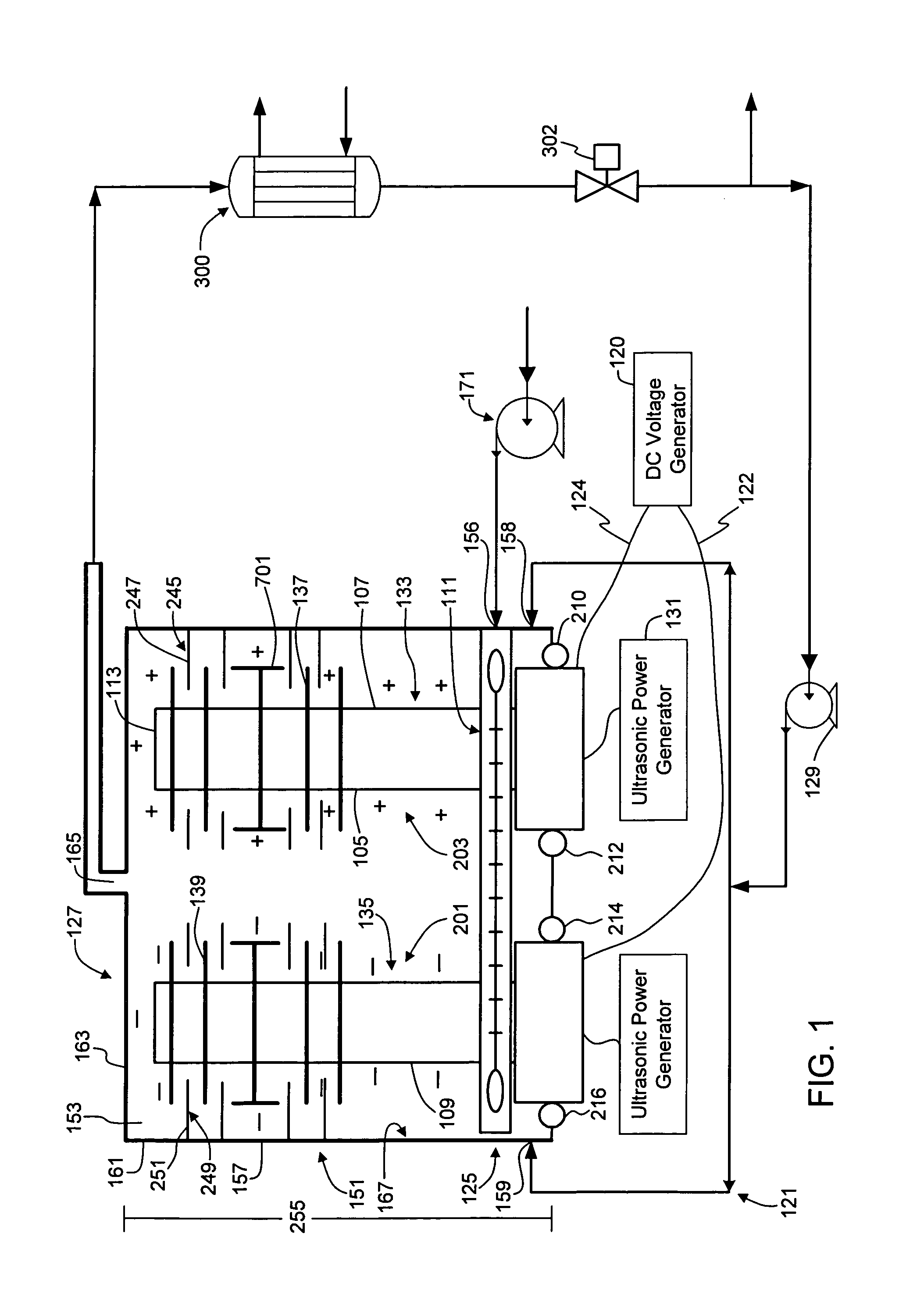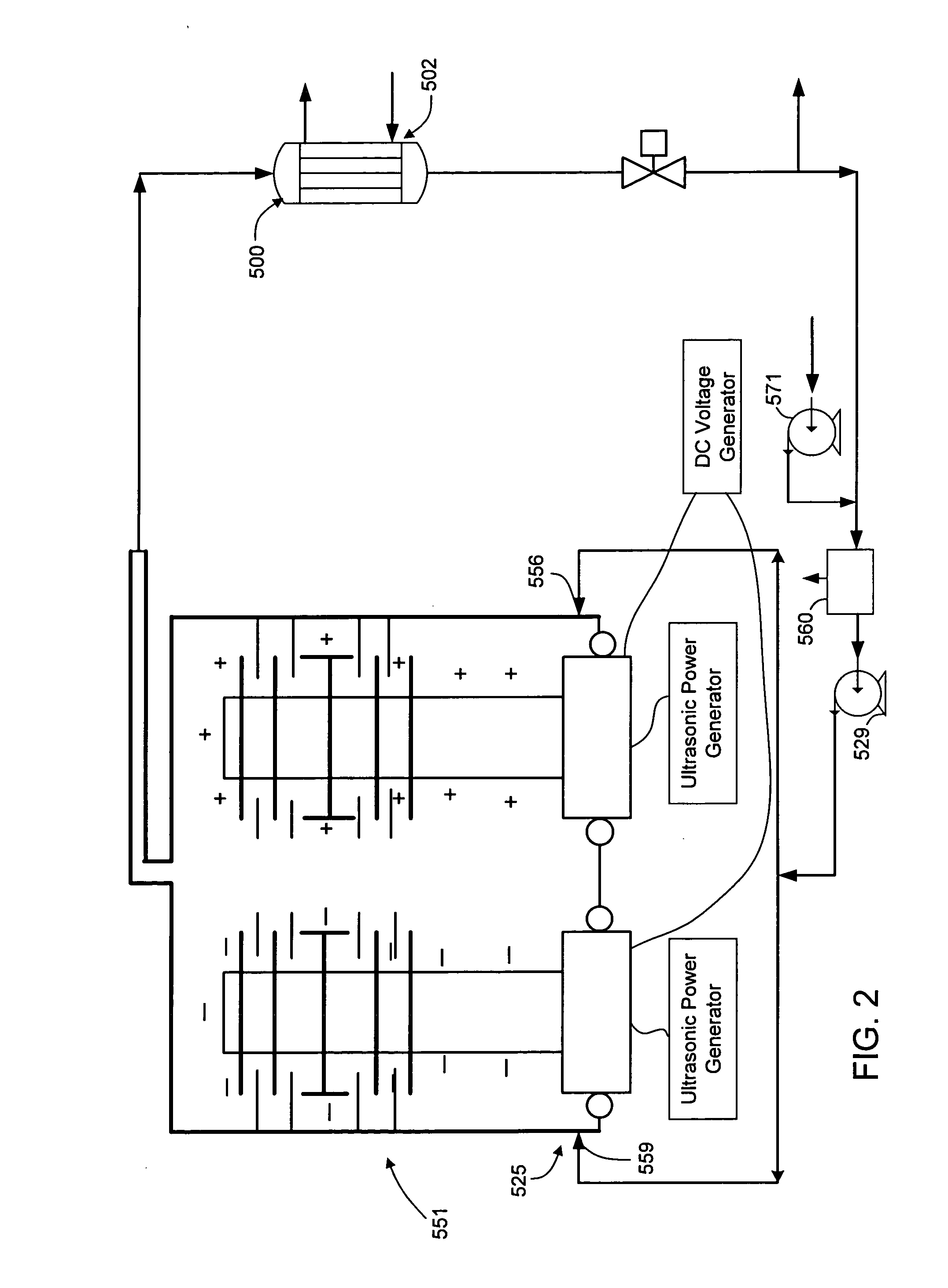Ultrasonic treatment chamber for initiating thermonuclear fusion
a technology of thermonuclear fusion and ultrasonic treatment, which is applied in the direction of nuclear reactors, nuclear engineering, greenhouse gas reduction, etc., can solve the problems of growing energy requirements around the world, inability to reproduce, and method was impractical for generating power,
- Summary
- Abstract
- Description
- Claims
- Application Information
AI Technical Summary
Benefits of technology
Problems solved by technology
Method used
Image
Examples
Embodiment Construction
[0017]With particular reference now to FIG. 1, in one embodiment, a thermonuclear fusion system for thermonuclear fusing of hydrogen gas isotopes generally comprises a treatment chamber, generally indicated at 121, that is operable to ultrasonically treat a carrier liquid and hydrogen gas isotopes, thereby creating a cavitation mode that allows for an increase in both temperature and pressure within the housing 151 of the chamber 121 to initiate a thermonuclear fusion reaction. Furthermore, the treatment chamber 151 contains ultrasonic horns 133 and 135 that independently act as electrodes (i.e., an anode and cathode) to attract the respective hydrogen gas isotopes towards the horns' outer surfaces 107 and 109, respectively, through the dipole moment on the gas isotopes, as described more fully below. Under such conditions, there is an increased concentration of hydrogen gas isotopes around the respective electrodes (i.e., outer surfaces of the horns), further initiating thermonucle...
PUM
 Login to View More
Login to View More Abstract
Description
Claims
Application Information
 Login to View More
Login to View More - R&D
- Intellectual Property
- Life Sciences
- Materials
- Tech Scout
- Unparalleled Data Quality
- Higher Quality Content
- 60% Fewer Hallucinations
Browse by: Latest US Patents, China's latest patents, Technical Efficacy Thesaurus, Application Domain, Technology Topic, Popular Technical Reports.
© 2025 PatSnap. All rights reserved.Legal|Privacy policy|Modern Slavery Act Transparency Statement|Sitemap|About US| Contact US: help@patsnap.com



